Dyschidia: description, types and care at home

Many growers prefer to grow exotic crops. One such plant is dyschidia. Her grace and unusual appearance immediately attracts attention.
Culture is evergreen liana. In the wild, it lives in the tropics. However, at home in the middle lane, you can grow such a flower. The features of caring for dyschidia, its varieties and reproduction will be discussed in the article.
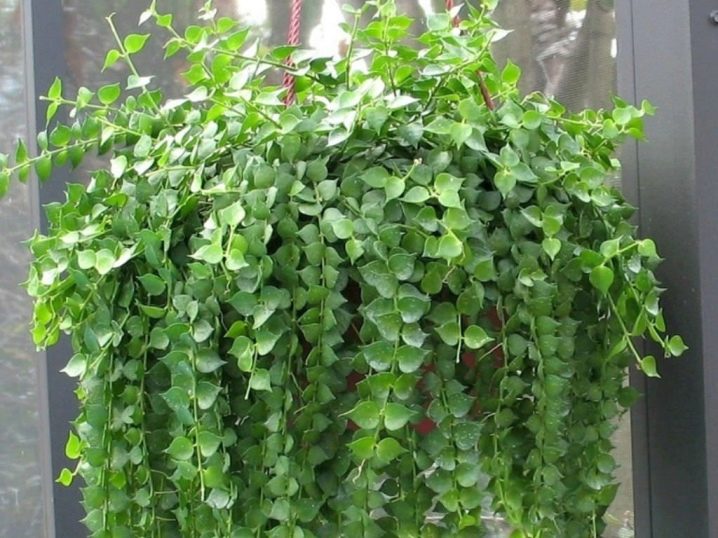
Peculiarities
Dyschidia are epiphytic plants. They belong to the group of vines. Development is not going fast, but the attractiveness of the culture remains throughout the year. It grows to a maximum of 0.5 meters... The size depends on the tying method and variety. The stems of the plant are thin, graceful, resilient. They reach 1 meter in length and have a pinkish-green hue. They cling to the support with aerial roots.
Leaves are not thick, have a rounded shape with a slight taper at the ends. Sometimes they are elongated. They are located on the stems densely and quite symmetrically, due to which an amazing plant pattern is created. The color is usually light green, although it can vary depending on the variety.
In addition to the usual, the plant has other leaves. They have a unique bubble-like shape. These "pouches" function as reservoirs for storing water. Thanks to this, the culture itself regulates the conditions of development and stores moisture in case of an extreme situation. Sometimes insects make their way inside, which make a storage of plant debris in the leaves. Under the influence of moisture, nutritious humus is formed, which is also very useful for the culture.
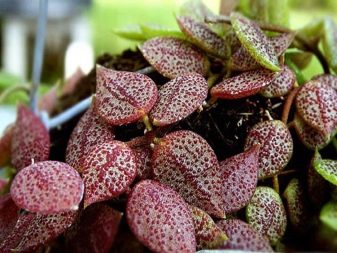
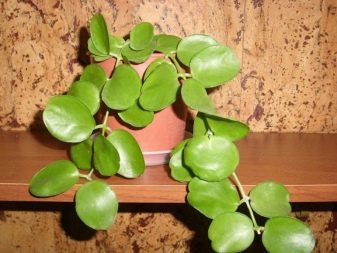
Flowering usually occurs once a year (sometimes more often)... It looks pretty impressive. Small flowers, collected in whorls of several pieces, resemble bells. Shades range from bright scarlet and pale pink to pure white. Flowering culture pleases from spring to autumn.
At home, dyschidia are grown in various forms. For example, it can be an ampelous option. For this, beautiful hanging containers are used. The second method is to place the vine on the pivot. These can be trellises, any decorative steel or wood bases. In any case, the plant will look very elegant.
The only thing worth considering is that due to its specific structure, it cannot be grown on stands. Ordinary tall pots won't do either.
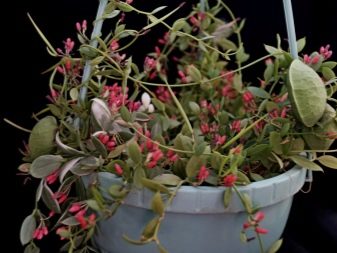
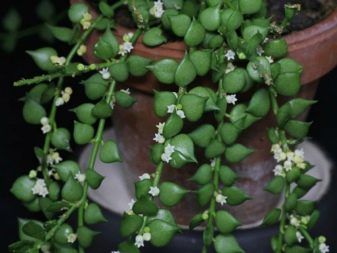
Varieties
In nature, there are more than 100 species of this amazing plant. At home, only certain varieties of dyschidia are bred. Let's consider some known varieties in more detail.
Ovate (Ovata)
The plant has long, pinkish-green stems. Leaves are oval. At first, they are painted in pink tones, but over time they turn green. Graceful light streaks enhance the decorative qualities of the crop. When flowering, small white buds are formed, collected in neat inflorescences.
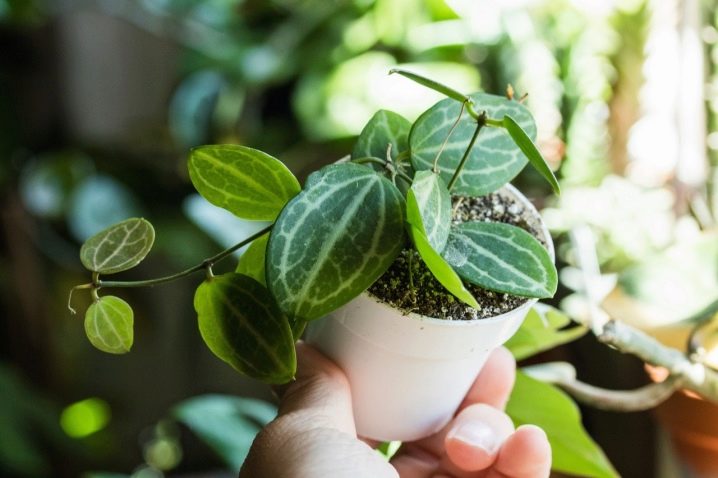
Nummularia
It is a very popular indoor variety. It is usually grown in hanging containers. The stems hang down 1.5 meters. The leaves are small, round. The plant looks quite attractive, it can become a real decoration of any room.
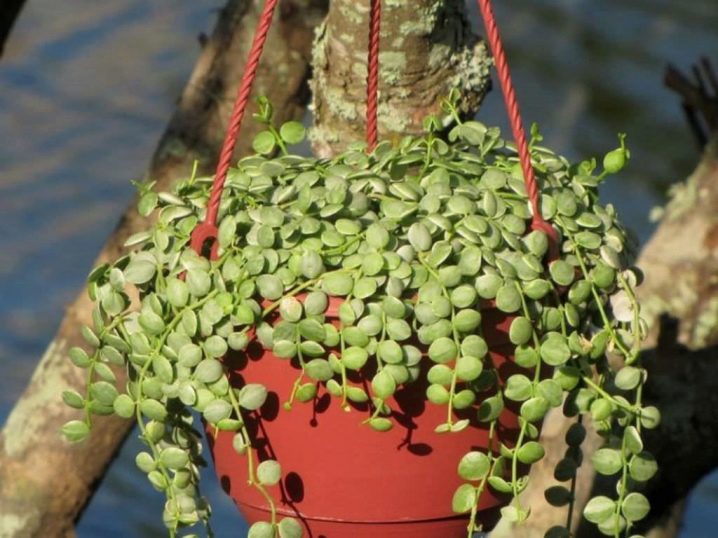
Ruskusolistnaya (russifolia variegata)
This variety has long stems covered with many small emerald leaves. Each leaf is shaped like a miniature heart. Because of this, the variety received the name "Million Hearts". The flowers are white in color and have a sweet honey aroma.
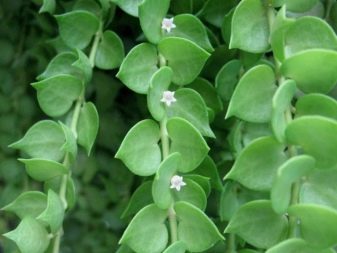
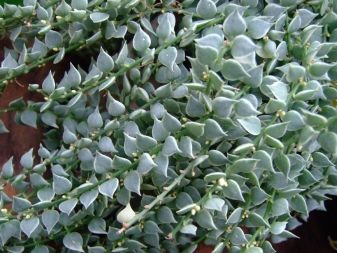
Scallop
The stems of the plant are covered with numerous aerial roots and neat leaves. Foliage color is light green. The shape is oval, there is a textured pattern. Twice a year, the culture pleases with flowers of pinkish or cherry tones.
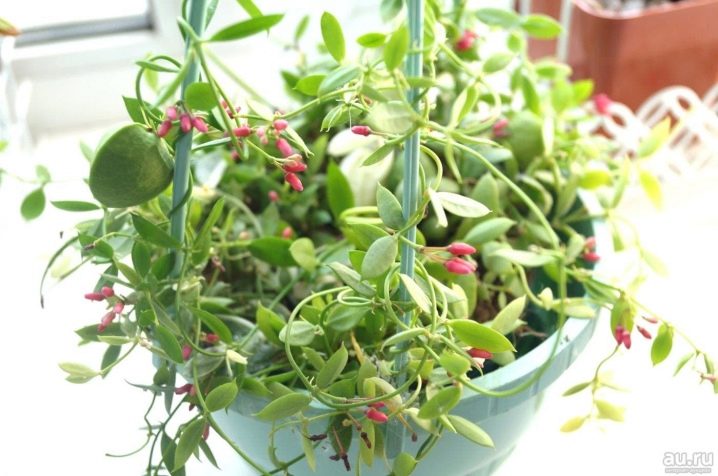
Apple leaf
This variety stands out with rather large leaves. Each of them is similar in shape to an apple, which is why the variety got its name. The foliage is green with white spots.
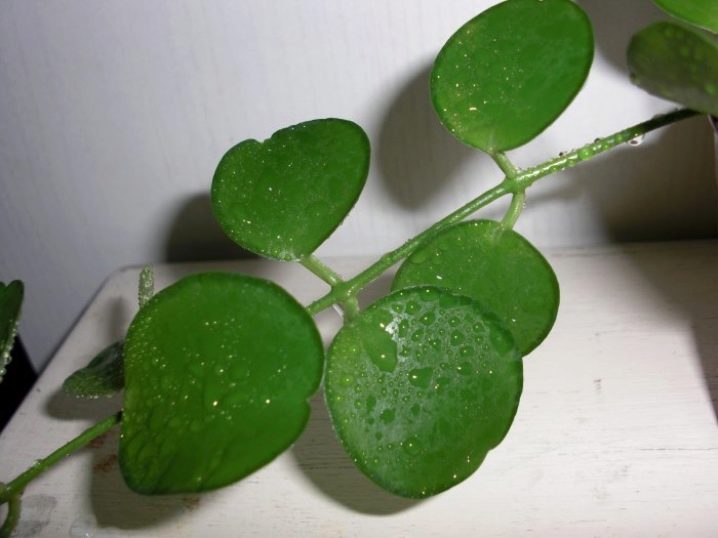
Vidalia
Plants of this variety are bright green in color. The leaves are rounded. Flowers of a pale pink shade adorn the liana twice or thrice a year.
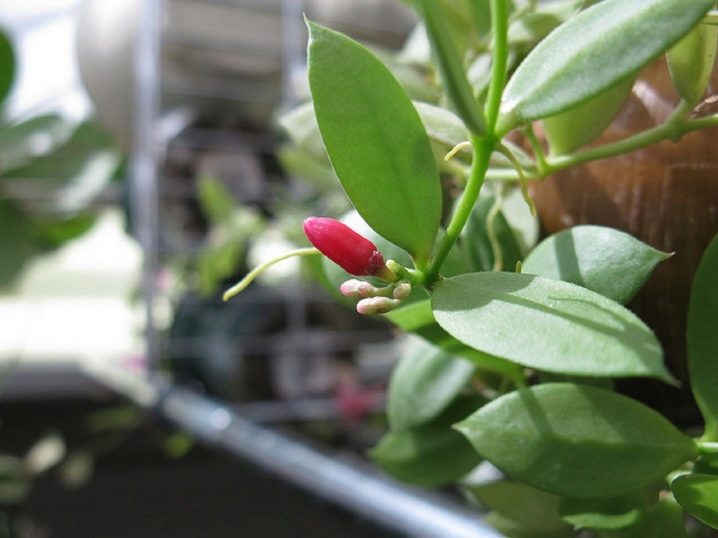
Hirsuta
This is a rather rare variety. The leaves are rounded, textured, covered with a small downy. During flowering, the culture is covered with small purple flowers, which are located on the plant one by one.

Raffleza
This variety is distinguished by long shoots reaching 5 meters. The leaves are oblong. The flowers are yellow and umbrella-shaped.

Singularis
The culture has elastic stems and rather large round leaves. The foliage color is green, with light blotches
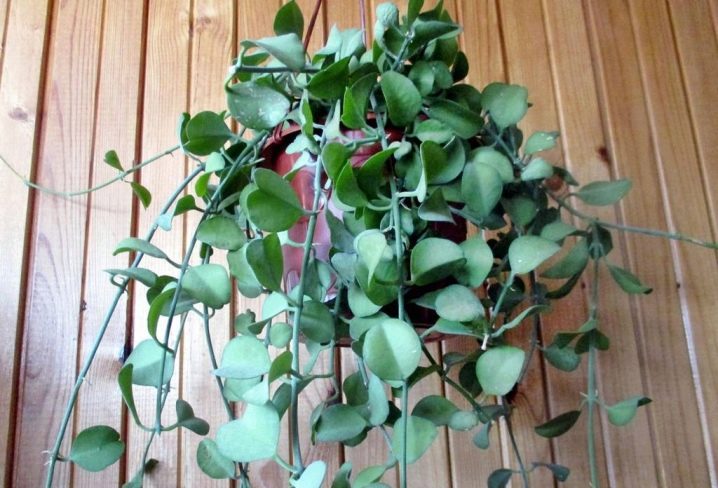
Conditions of detention
Lighting
Although in nature, culture can grow in the shade, indoors it is better to place it in the light. However, it should be remembered that the plant cannot stand the direct rays of the sun. Lighting should be diffused.
An excellent option is an east or west window. South windows darken. On the north side, backlighting is required. Culture thrives in artificial light.
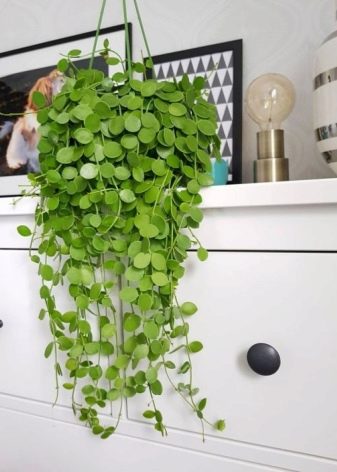

Temperature and humidity
Dyschidia is thermophilic and easily tolerates heat. The room temperature should not drop below 18 degrees. The upper limit in summer is 30 degrees Celsius. During the rest period, it is better to maintain a range of 18-23 degrees above zero.
It is important to provide the plant with the required level of air humidity. It should be high (about 40%). On hot days, the frequency of water procedures should be increased. Spraying can be applied. It is permissible to use pallets with water or wet pebbles as humidifiers. Many flower growers purchase special appliances.
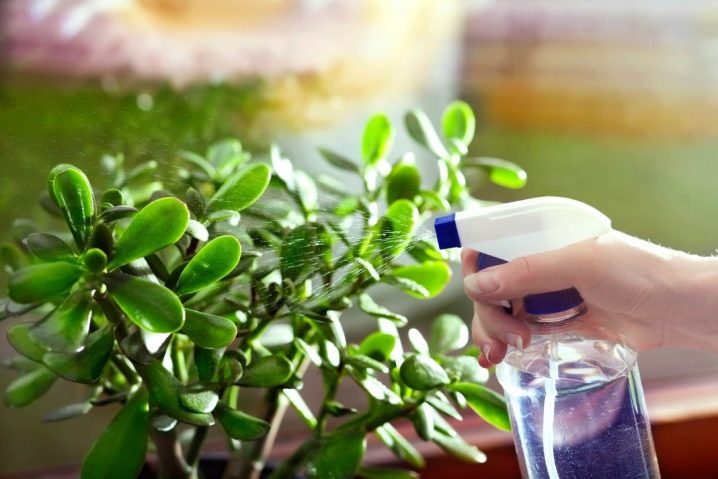
Landing
The soil in which the plant is planted must pass moisture and air well. The best option is a special composition designed for this type of crop. The soil should include:
- charcoal;
- sphagnum;
- pine bark;
- leafy ground;
- river sand;
- perlite.
It is important not to forget about the drainage layer. This is necessary so that moisture does not stagnate. The planting capacity can be any.
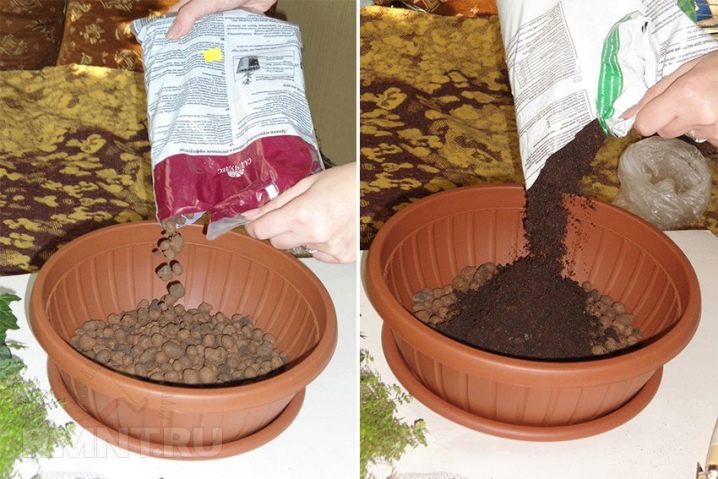
A young flower is transplanted in the spring. The procedure begins only when signs of strong growth are detected. The root system should completely fill the pot.
How to care?
Top dressing
Caring for a culture at home has its own nuances. According to the advice of professionals, the plant should not be fed often. Twice a year you need to apply fertilizer, diluted in half. The first time is in April, the second time is in July or August. Another scheme is also possible. Some growers add nutrients once a month in minimal doses during the entire spring-summer period.
It is recommended to purchase special fertilizers intended for succulents. Products suitable for domestic deciduous plants are also acceptable. At the same time, traditional root dressing and spraying with preparations of the green part of the plant should be alternated.
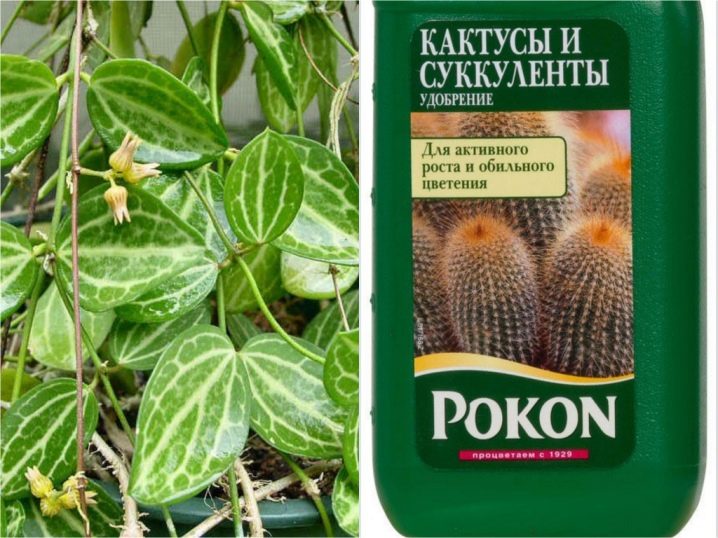
Watering
The culture belongs to the moisture-loving, if we talk about the air. However, frequent and abundant watering of dyschidia is not needed. It is enough to provide constant light soil moisture. It is worth watering the plant only when the topsoil dries up (2-3 cm).
Drying of all the soil is undesirable, but it will not bring much harm. But as for excessive watering, this can ruin the flower. The recommended frequency of procedures is 2-3 times a month. In winter, the frequency of watering is reduced. To maintain a stable, comfortable environment for the plant during the dormant period, one procedure every 3-4 weeks is enough.
If the plant is grown in rutaria, moisture is produced every week. Also, the flower is bathed in the shower, then draining the excess liquid. The water should not be cold and hard. Better to use liquid at room temperature after boiling or filtering.

Pruning
This vine practically does not need pruning. Only for decorative purposes can a neat plant be formed by cutting off too long shoots. It is imperative to pinch them. This procedure promotes rejuvenation of the culture and also stimulates flowering.
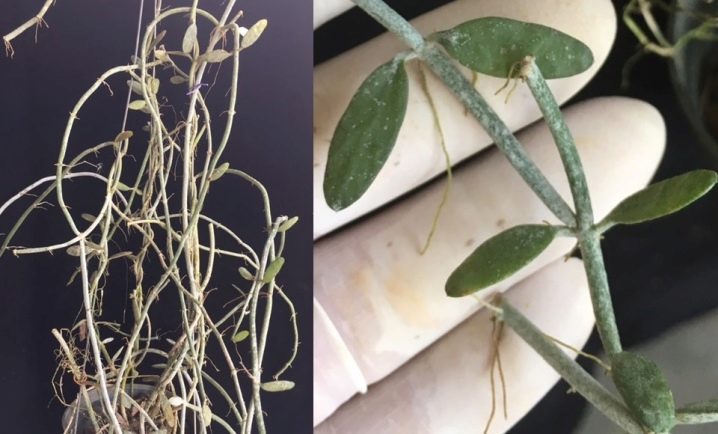
Reproduction
Seeds
Dyschidia seeds are found in large pods that form after flowering. The seeds are almost weightless. They can fly off easily, so care should be taken not to lose seed.
Sowing is carried out in the spring. Take a mixture of sand and peat in a 1: 1 ratio. The seeds are placed in moist soil and lightly sprinkled on top (the thickness of the earthen cover is about 2-3 mm). Then the plantings are covered with glass or polyethylene and placed in a place with diffused light. The desired temperature regime is 20-25 degrees.
The seeds should be ventilated daily by lifting the material. When the first leaves appear (after about 3 months), young plants are carefully planted in individual containers.
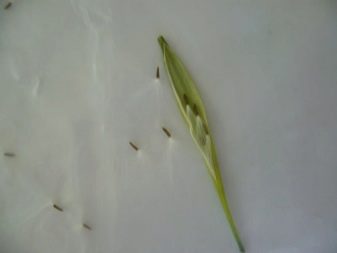
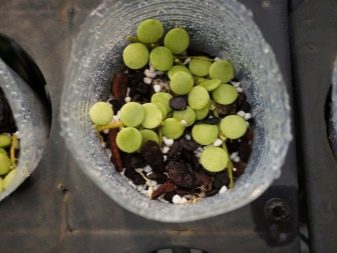
Cuttings
This is an easier and faster way to propagate a culture. The upper parts of young shoots are suitable for this. They are cut at an angle. Places of cuts on the plant are immediately sprinkled with charcoal. The cuttings are treated with a solution that stimulates rapid root formation. The size of each cutting should be 9–10 cm.
As in the previous case, take a sand-peat mixture. Cuttings are planted with a slight slope. They are then covered with transparent material to simulate greenhouse conditions. The recommended temperature is above 20 degrees. Every day, planting is aired, moderate soil moisture is maintained.
Rooting takes place within a month. Another method of cuttings is to place the separated part of the shoot in boiled water.
The liquid should be changed daily to eliminate the likelihood of decay of the planting material.
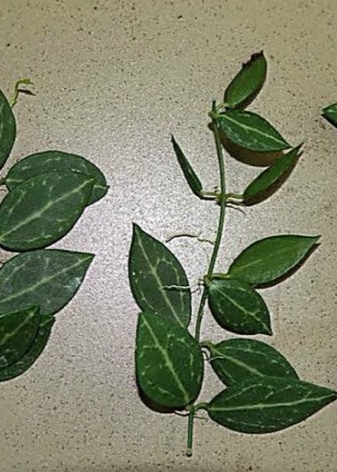
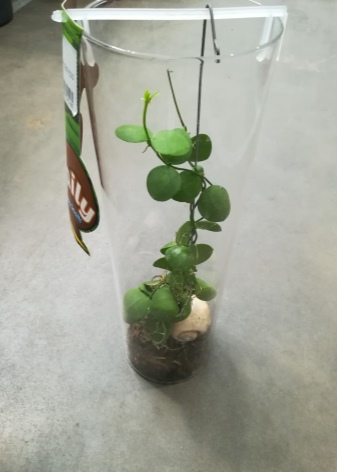
Diseases and pests
Dyschidia cannot be called hardy. With improper care, serious problems can begin:
- with too much watering, the roots may begin to rot;
- with insufficient air humidity, the mustache darkens, the leaves are deformed, the elements that store water disappear;
- when the direct rays of the sun hit the foliage, it turns red.
Pests also do not bypass the culture. The most common threats: aphids, mealybugs, spider mites.
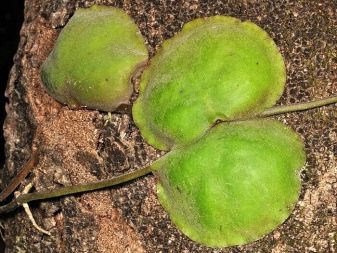

The problem needs to be resolved urgently. If pests are found, it is necessary to immediately treat the plant with an appropriate insecticide.
For dischidia, see the next video.























The comment was sent successfully.